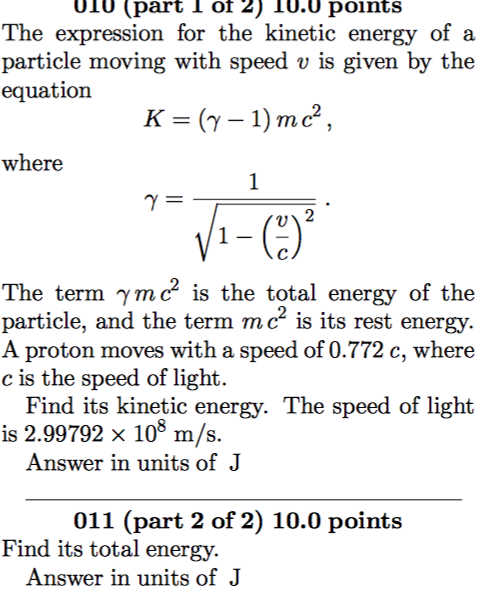

So, in a sense, it can be easier to think about the total energy of a system and the vibrational portion is the bit that's left over. In terms of separating the energy into different terms, you are only interested in the kinetic energy portion of this energy, but it is hard to separate from the potential unless you have a known set of conditions (e.g., precisely how compressed the spring is at a given time/location). Think about the spring-mass oscillations from previous notes. It's clear there can be energy due to vibration even if the center of mass doesn't move. That is, the total energy due to vibrations is due to the potential energy associated with the interaction causing the vibrations and the kinetic energy of the vibrations themselves. You read about the energy associated with vibrations earlier, but this energy contained both potential and kinetic terms. Separating the Total Kinetic Energy in a Multi-Particle System Luckily, we can separate the motion of the center of mass of the baton from the motion around the center of mass, making this energy calculation simpler. Adding up all the kinetic energies of the atoms here is a real pain.

This is another form of the relative velocity motion that you read about earlier. Relative to the fixed frame of the ground, the atom on the right, at this instant, is moving faster than the atom on the left. At this instant, the atom on the right is moving up as the baton rotates.

Kinetic energy is a property of a moving object or particle and depends not only on its motion but also on its mass. If work, which transfers energy, is done on an object by applying a net force, the object speeds up and thereby gains kinetic energy. 1) In this case, you can still add up the velocities of each atom, but now you have taken into account the translational velocity of the whole baton.Ĭonsider a pair of atoms that are the same distance from the center of the baton (red circles in the figure to the right). kinetic energy, form of energy that an object or a particle has by reason of its motion. The kinetic energy of the baton has increased because the baton is both translating and rotating. The whole baton is moving up with a known speed.

Now, consider that this baton is now tossed into the air while it twirls. The kinetic energy of atoms on either side of the center (but at the same distance from it) has the same kinetic energy because they move at the same speed. This is fairly simple (but painful) to do. You could add up all the individual velocities of the atoms to get the total kinetic energy of the baton. As the baton is twirled, each atom in the baton moves in a circle at a speed that depends on how far the atom is from the center of the baton. After 15 minutes, which of the follow best describes what happens to the temperature of each?ĪNSWER:The temperature of the ice increases, while the temperature of the water decreasesġ0.Atoms (red circles) on either side of the center of a twirled and tossed baton have different speeds.Ĭonsider a baton that is being twirled in a circle in someone's hand. The student then places the bottle of liquid water into the tub of ice. Which statement explains why the room starts to feel cooler?ĪNSWER:Air moves from the areas of higher temperature to areas of lower temperature.ĩ.A student takes the temperature of a bottle of liquid water and a tub filled with ice. Which sample has the lowest kinetic energy?Ĩ.A teacher opens a window on a cold day. Other than the temperature, the water samples are the same. Which tool will help her collect the necessary data?Ħ.A student records the temperature of several water samples as shown in the table. Which energy change occurs in the particles in the water as it undergoes a phase change from a liquid to a solid?ĪNSWERThe potential energy decreases due to the tighter arrangement of the particles.Ĥ.An increase in thermal energy leads to _ĪNSWERan increase in heat and an increase in kinetic energy until a phase change occurs.ĥ.A student wants to collect data during an experiment about the transfer of kinetic energy in a sample of water and ice.
#Kinetic energy of particles full#
Which similarities or differences are there between water at 100☌ and steam at 100☌?ĪNSWER:The particles will have more space between them as steam, but they will be moving at the same speed in both states.ģ.An ice cube tray full of water is put into a freezer. 1.In which case would the kinetic energy of particles be increasing?ĪNSWER: Metal is heated from room tempature to 200CĢ.Water boils at 100☌ and turns into steam.


 0 kommentar(er)
0 kommentar(er)
